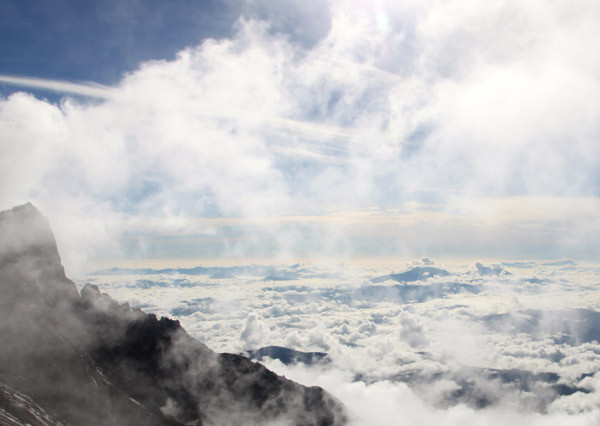If there’s one thing south-east Asia isn’t renowned for, it’s mountain climbing. This goes some way to explaining the massive popularity of Mount Kinabalu, which at 4,095 metres is the highest peak south of the Himalayas and north of Papua New Guinea. Add to that the fact that this world heritage site is one of the most biologically diverse places on the planet— home to 6,000 kinds of plants, 326 bird species and 100 mammal species including endangered Bornean orangutans—and a picture emerges of a high-altitude theme park writ large. Mount Kinabalu has become a victim of its own success with overcrowding in clear evidence along the 8.7-kilometre trail to the summit, but it is possible to avoid the worst of this with some planning.
Most visitors to Borneo plan their trips outside of the monsoon (November to April), when as much as 500 millimetres of rain per month falls on some parts of the island. But Borneo is in the tropics and the fact is it can rain cats and dogs all year round. Likewise, you can visit during the monsoon and be fortunate to enjoy successive blue-sky days with the added bonus of significantly less people on the mountain. “During August, there are around 500 people walking up and down the trail every day, it’s much quieter [in November],” says mountain guide Joe as we pass the first group of descending hikers an hour after leaving Timpohon Gate (which is at 1,866 metres).

A healthy example of a carnivorous pitcher plant. Photos: supplied.
While strolling through the temperate lower-mountain rainforest Joe explains how the mountain was formed underground when cooling lava rushed into air pockets before being pushed to the surface by the movement of tectonic plates. The summit, Lows Peak, was named after the British colonial officer who made the first recorded ascent in 1851…
…read more in Wild issue 144.

The writer approaches Lows Peak after an early morning ascent.


